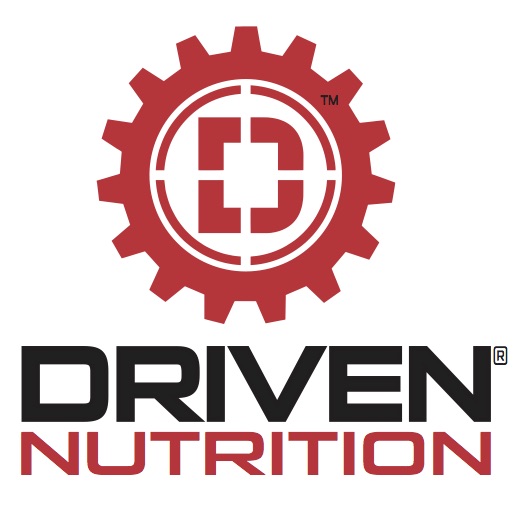10 Proven Ways to Boost Metabolism and Burn Fat Fast
Are you on a mission to shed those stubborn pounds and achieve a leaner, healthier physique? Boosting your metabolism is the key to unlocking efficient fat burning and reaching your weight loss goals. In this article, we’ll explore ten proven methods to supercharge your metabolism and accelerate fat loss.
Understanding Metabolism and Calorie Deficit
What is Metabolism?
Metabolism refers to the complex set of chemical reactions that occur in your body to convert food into energy. It’s influenced by various factors, including age, gender, genetics, body composition, and lifestyle habits.
It’s crucial to note that despite the strategies we’ll discuss, achieving fat loss ultimately requires a calorie deficit. In other words, you need to consume fewer calories than your body burns in order to tap into stored fat for energy. This deficit can be achieved through a combination of dietary changes, increased physical activity, and lifestyle modifications.
Foundational Principles for Healthy Weight Loss
It’s important to prioritize sustainable and healthy weight loss practices. Crash diets and extreme measures can be detrimental to your overall well-being and slow down your metabolism. Instead, focus on long-term lifestyle changes that promote a balanced and nourishing approach to weight loss.
Resistance Training: Sculpting Muscles and Boosting Metabolism
How Resistance Training Works
Imagine resistance training as a sculptor shaping a statue. When you lift weights or do strength training exercises, you’re building and sculpting your muscles. Muscle is an active tissue that requires more energy to maintain compared to fat. As you increase your muscle mass, your body’s energy demands naturally rise, resulting in a higher resting metabolic rate. This elevated metabolism enables you to burn more calories throughout the day, even at rest.
Integrate a range of resistance training exercises like weightlifting, bodyweight exercises, or resistance bands into your fitness routine at least 3 days a week. Strive to gradually intensify the workouts and challenge your muscles.
By doing so, you not only sculpt a toned physique but also rev up your metabolism, making it easier to shed unwanted fat and maintain a healthy weight long-term.
The Afterburn Effect
After a resistance training workout, your body continues to burn calories, almost like a bonus round. This post-exercise calorie burn, scientifically known as the afterburn effect, contributes to ongoing fat loss.
Cardio and High-Intensity Interval Training (HIIT): Elevate Your Heart Rate
Cardiovascular exercises, such as brisk walking, jogging, cycling, swimming, or dancing, are excellent for elevating your heart rate, burning calories, and boosting metabolism. Regular engagement in cardio activities can increase your metabolic rate and facilitate effective fat burning. These exercises stimulate the cardiovascular system, enhancing oxygen delivery and energy production within your body.
Walking is the most underrated form of exercise. Learn more here: https://nutrifitbyari.com/the-benefits-of-walking-walk-your-way-to-better-health/
HIIT for Maximum Fat Burn
Enter High-Intensity Interval Training (HIIT): a workout strategy that mixes short bursts of intense exercise with brief recovery periods. HIIT not only challenges your heart but also triggers the afterburn effect, which keeps your metabolism elevated long after your workout. This continued calorie burn promotes fat loss.
Remember to choose activities you enjoy to maintain consistency and make your journey to a leaner, fitter body enjoyable.
Protein-Rich Foods: Fueling Metabolism
Optimizing Protein Intake
A diet rich in protein can be a game-changer when it comes to boosting metabolism and achieving efficient fat burning. Protein has a higher thermic effect of food (TEF) compared to carbohydrates or fats, which means your body burns more calories, up to 30%, during the digestion and absorption process.
When you consume protein-rich foods, your body expends extra energy to break down and process the nutrients. This increase in metabolic activity contributes to a higher calorie burn. Additionally, protein plays a vital role in preserving and building lean muscle mass, further supporting a faster metabolism.
To harness the metabolism-boosting benefits of protein, incorporate various sources into your meals, such as lean meats, poultry, fish, eggs, and dairy products. Aim to distribute your protein intake evenly throughout the day to optimize its effects on metabolism and promote satiety.
Make protein a cornerstone of your dietary approach, and witness your metabolism soar while achieving your weight loss goals. You can learn more about protein by reading https://nutrifitbyari.com/decoding-macronutrients-an-in-depth-look-at-carbs-proteins-and-fats/
Green Tea: Nature’s Metabolism Booster
Catechins and Thermogenesis
Green tea has gained popularity as a natural metabolism booster and aid for fat burning. It contains powerful antioxidants and active compounds like catechins, which offer numerous health benefits, including their potential to enhance metabolism.
Catechins have been found to increase thermogenesis, the body’s natural calorie-burning process. By stimulating fat oxidation and increasing energy expenditure, green tea can help rev up your metabolism and promote fat loss.
Furthermore, green tea can provide a slight boost to your metabolic rate, leading to an overall increase in calorie burn throughout the day. While the effects may be modest, incorporating green tea into your daily routine can complement your weight loss efforts.
Remember that green tea should be used as part of a healthy lifestyle, including regular exercise and a balanced diet, to achieve sustainable fat loss and a boosted metabolism.
Sufficient Sleep: The Silent Metabolism Booster
The Importance of Quality Sleep Boosts Metabolism
Imagine sleep as your body’s superhero recovery phase.
Ensuring you get enough high-quality sleep is crucial for maintaining a healthy metabolism and supporting efficient fat burning. Sleep deprivation can disrupt important hormonal balances, leading to an imbalance in appetite-regulating hormones such as ghrelin and leptin. This imbalance can increase hunger, cravings, and the likelihood of overeating, ultimately hindering weight loss efforts.
Prioritizing adequate sleep allows your body to properly regulate hormones, repair and rebuild tissues, and optimize metabolic processes. Aim for 7-9 hours of uninterrupted sleep per night to support a healthy metabolism.
Establish a regular sleep routine, create a calming environment, limit electronic device usage before bed, and practice relaxation techniques to improve sleep quality. By giving your body the rest it needs, you’ll optimize your metabolism and set yourself up for successful fat burning.
Stress Management: A Healthy Metabolism’s Best Friend
Managing Stress and Hormonal Balance
Stress, like a persistent villain, releases cortisol—a hormone that can slow down your metabolism and promote fat storage, especially around the belly.
Effectively managing stress levels is essential not only for mental well-being but also for maintaining a healthy metabolism and promoting efficient fat burning.
High cortisol levels can disrupt other hormonal balances, such as insulin and thyroid hormones, further impacting metabolism and weight management. Additionally, stress often leads to emotional eating and cravings for high-calorie, comfort foods, which can hinder weight loss efforts.
Stress Reducing Techniques to Support Metabolism
To combat the detrimental effects of stress on metabolism, it’s crucial to incorporate stress management techniques into your daily routine. These techniques can include exercise, meditation, deep breathing exercises, mindfulness practices, engaging in hobbies, and seeking support from friends, family, or professionals.
By managing stress effectively, you can rebalance your hormones, optimize your metabolism, and create a healthier, more conducive environment for fat burning.
Intermittent Fasting: Harnessing Metabolic Flexibility
Metabolic Benefits of Intermittent Fasting
Intermittent fasting is like giving your digestive system a vacation.
Intermittent fasting (IF) has emerged as a popular approach to boost metabolism and promote fat burning. This eating pattern involves cycling between periods of fasting and eating within a specific window of time. By restricting your eating window, intermittent fasting can improve metabolic flexibility and enhance insulin sensitivity.
During the fasting period, your body depletes stored glycogen and starts utilizing fat as a fuel source. This shift in energy utilization can aid in weight management and fat loss. Popular Intermittent Fasting methods include the 16:8 method, where you fast for 16 hours and consume all your calories within an 8-hour window, or alternate-day fasting, where you have fasting and non-fasting days.
While research suggests potential benefits of intermittent fasting, it’s important to note that individual responses may vary, and it may not be suitable for everyone. If you have any concerns or pre-existing conditions, consult with a healthcare professional before embarking on an intermittent fasting regimen.
Adequate Hydration: Water’s Role in Metabolic Function
Water and Calorie Utilization
Drinking enough water is a simple yet powerful way to support optimal metabolic function and enhance fat burning. Water plays a crucial role in numerous metabolic processes, including digestion, nutrient absorption, and the transportation of waste products.
Staying adequately hydrated helps maintain an optimal metabolic rate by ensuring efficient calorie utilization. Research suggests that drinking water may temporarily increase the number of calories burned, known as resting energy expenditure.
Additionally, staying hydrated can prevent water retention and promote healthy kidney function, which is essential for eliminating waste and toxins from the body.
Drinking water before meals can also help control appetite and reduce calorie intake, supporting weight loss efforts. Aim to consume at least 1/2 ounce to 1 ounce of water per pound of bodyweight per day, and adjust your intake based on activity levels, climate, and individual needs.
Non-Exercise Activity Thermogenesis (NEAT): Move More, Burn More
Incorporating More Movement
Think of NEAT as your body’s everyday heroics.
Increasing non-exercise activity thermogenesis (NEAT) can have a significant impact on boosting metabolism and burning fat. NEAT refers to the energy expended through daily activities that are not considered intentional exercise, such as walking, taking the stairs, gardening, or even fidgeting.
These seemingly minor activities can add up and make a substantial difference in calorie burn throughout the day. Studies suggest that individuals with higher levels of NEAT tend to have better weight management and overall metabolic health.
Incorporating more movement into your daily routine is a practical and effective way to increase NEAT. Instead of taking the elevator, opt for the stairs. Park your car further away from your destination to get in some extra steps. Consider standing or walking while on phone calls or during breaks.
Engaging in activities that promote movement not only contributes to a higher metabolic rate but also promotes overall health and well-being.
Metabolism-Boosting Foods: Giving Your Body an Edge
Foods to Boost Metabolism
Incorporating metabolism-boosting foods into your diet can give your body a slight extra fat-burning edge. Certain foods that boost metabolism contain properties that can increase your metabolic rate, allowing you to burn more calories throughout the day.
Chili peppers, for example, contain a compound called capsaicin, which has been shown to temporarily boost metabolism. Incorporating spicy foods into your meals can increase thermogenesis and potentially enhance fat oxidation.
Ginger is another metabolism-boosting ingredient known for its thermogenic properties. It can help raise your body temperature, which, in turn, can increase calorie expenditure.
Whole grains, such as quinoa, oats, and brown rice, are rich in fiber and require more energy to digest, leading to a slight increase in metabolism. Additionally, their complex carbohydrate content provides a steady release of energy, preventing blood sugar spikes and crashes that can negatively impact metabolism.
Other foods like coconut oil, and grapefruit have also been associated with metabolism-boosting effects.
Incorporate these metabolism-boosting foods into your diet to support fat burning and overall metabolic health. Remember, while these foods can provide a slight edge, they should be part of a well-rounded, balanced diet.
Conclusion: Incorporate these superhero methods into your daily routine to boost metabolism, burn fat, and achieve your weight loss goals. For more tips and insights on health and fitness, subscribe to NutriFit by Ari so you stay up to date on new posts and join my community of motivated individuals on the journey to a healthier, fitter life. You can learn more about sustainable weight loss by reading https://nutrifitbyari.com/the-ultimate-guide-to-weight-loss-unlock-your-potential/












